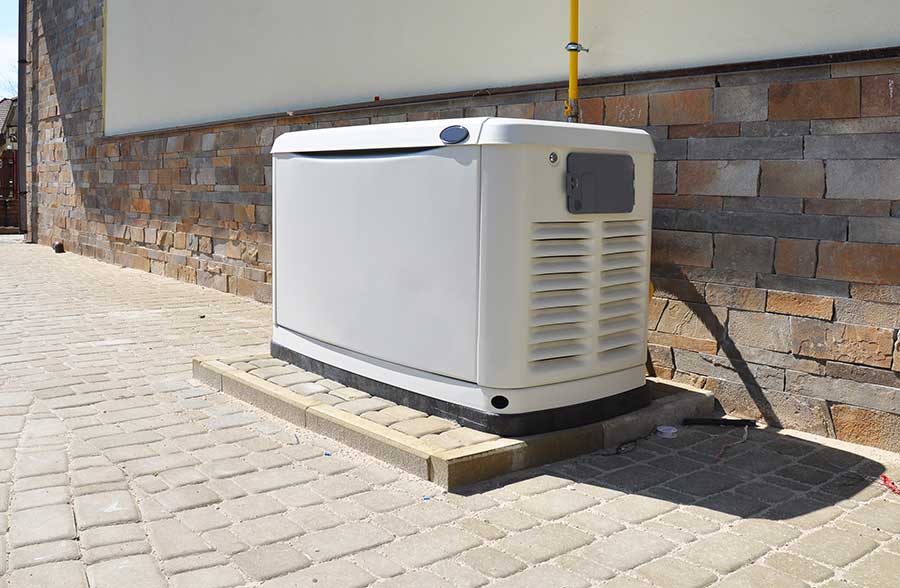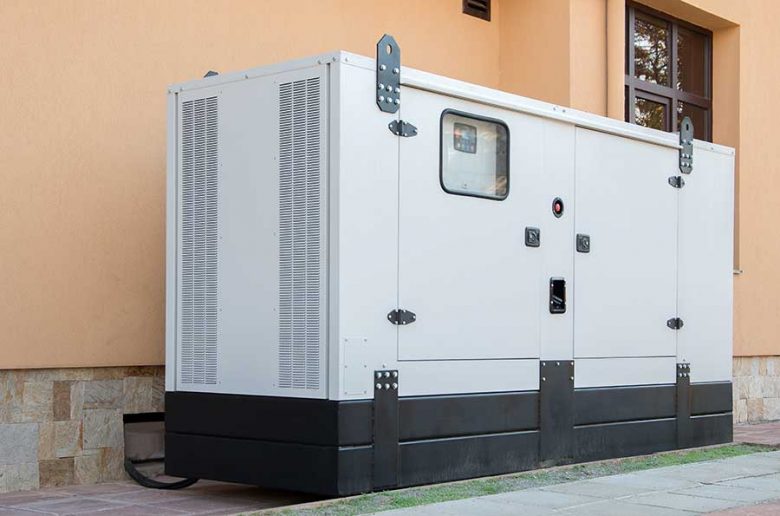Power outages can be a huge inconvenience. When you have no lights, TV, or air conditioning, that can make for an uncomfortable experience — not to mention your food in the fridge will spoil. A generator can be a lifesaver in these situations, but how does it work to power your house?
A generator converts mechanical into electrical energy using the electromagnetic induction principle. It has a copper conductor coil with a metal core (armature) that spins inside a magnet. The spinning creates a magnetic field, which interacts with the copper coil to create an electrical current.
This comprehensive guide will explain everything you need to know about how generators work to provide energy, the different types of generators, and how to choose the right one for your needs.
How a Generator Actually Works To Provide Energy
Generators, also called on-demand or standby generators, provide backup power when there’s an interruption in the main power supply. For example, suppose inclement weather knocks out power lines, and the electrical grid goes down. In that case, a generator can keep the lights on and power essential appliances until repairs can be made.
To understand how a generator works, you should first understand how electricity works. Electricity is the flow of electrons through a conductor (e.g., a wire). There must be a closed circuit for electricity to flow, meaning the electrons can flow freely from one end of the conductor to the other without any gaps.
A generator creates a closed circuit by using a magnet to create an electromagnetic field. The generator features a copper conductor coil with a metal core connected to a motor.
The motor spins the coil inside a permanent magnet, which creates the electromagnetic field.
This field interacts with the conductor coil, which agitates the electrons and causes them to flow freely, creating an electrical current. The current generated can then be used to power appliances, lights, electronics, and other essentials during a power outage.
Generators use a variety of fuel sources (including gas, diesel, propane, and natural gas) to power the motor. Most industrial generators run on diesel fuel, as it’s the most efficient and cost-effective option.
Residential generators are typically powered by natural gas or propane, as these are the most commonly available fuel sources for homeowners.
How Much Power Does a Generator Produce?
Generators are available in a range of power capacities from five kW to 50 kW for residential use and 50 kW to over three megawatts for commercial and industrial applications. The amount of power needed depends on what that power will be used for.
The power output of a generator is measured in watts (W) or kilowatts (kW). One kilowatt is equal to 1,000 watts. As noted, the power output is determined by the load or the amount of power required to run the appliances and devices you need to keep the electricity on during a power outage.
For example, a 5kW generator can typically power a fridge, fan, lights, and a few other small appliances. On the other hand, a 50kW generator can power a larger home or small business with multiple appliances, including air conditioning.
Related: Are Generators Loud? (Find Out Here)
The Different Types of Generators

Not all generators are created equal. There are several different generators, each with its unique features and benefits. The type of generator you need will depend on your specific power needs. The three most common types of generators are:
- Standby generators
- Portable generators
- Inverter generators
Standby Generators
Standby generators are permanent fixtures outside your home or business and are connected to your electrical system. They’re automated, meaning they turn on automatically when the power goes out. During an outage, the alternator kicks on, converting the mechanical energy of the spinning motor into electrical energy, which then powers your home’s electrical circuits.
Standby generators are powered by natural gas or propane and require professional installation. While they’re more expensive than other generators, they’re the most reliable and convenient option for backup power.
Portable Generators
Portable generators are small, self-contained units that can power a few small appliances or provide backup power for essential items during a power outage. They run on gasoline, propane, or diesel and typically have a power output of 5kW to 10 kW.
Unlike other generators, they’re relatively inexpensive and easy to operate but also noisy and produce harmful emissions. Portable generators have power outlets to plug in devices and appliances.
Inverter Generators
An inverter generator functions differently from other types of generators. Instead of running at a constant speed, an inverter generator adjusts its speed to match the power demand of the devices and appliances you’re running. This makes them more fuel-efficient and quieter than other types of generators.
Inverter generators produce clean power that’s safe for sensitive electronics like laptops, phones, and laptops. They’re excellent for camping, boating, and other outdoor activities since they can store power.
Unfortunately, they have a lower power output, so they’re not ideal for powering large appliances or multiple high-wattage devices.
How Big of a Generator Do I Need to Run a House?
You can run a house with a generator with a wattage rating of 5,000 to 9,000. That said, the actual size of the generator you should use depends on the number of appliances and devices you need to keep the electricity on during a power outage.
Generators with the wattage ratings mentioned above will efficiently power your whole house. These generators can run your fridge, freezer, lights, television, and other essential devices simultaneously without any problems.
To calculate the wattage you need, simply add up the wattage of all the devices and appliances you want to keep powered and select a generator with a higher wattage rating. Don’t forget to factor in the start-up wattage needed to run motor-driven appliances like air conditioners and fridges. Start-up wattage is usually one or two times the wattage needed to keep the appliance running.
Keep in mind that the larger the generator, the more expensive it’ll be. If you only need to power a few essential devices, you can save money by choosing a smaller generator.
Tips for Choosing the Right Generator for Your Home
Now that you know the different types of generators and how to pick the right size generator for your home, it’s time to choose the best one for your needs. Here are a few tips to help you make the right decision:
- Wattage: Different appliances and devices require different amounts of power to run. Be sure to calculate the wattage you need before choosing a generator. Pick one that can handle the start-up wattage of your devices and the wattage needed to keep them running.
- Type of generator: As I mentioned, your choices include portable gasoline-powered generators and standby propane generators. Also, the type of generator you choose should be based on your needs. A portable generator will suffice if you only have to power a few essential devices. But a standby generator is the best option if you need to power your entire house.
- Noise level: Some generators are very noisy, while others are relatively quiet. Portable generators are typically noisier than standby generators. If noise is a concern, an inverter generator is an ideal option as it runs more quietly than other types.
- Price: Generators range from a few hundred dollars for portable and inverter generators to several thousand dollars for standby generators. When considering a generator’s cost, be sure to factor in the fuel price.
Related: Is It Cheaper To Run A Generator On Propane Or Gasoline
Final Thoughts
A generator can be a lifesaver during a power outage. It turns mechanical energy into electricity using the electromagnetic induction principle. As the engine runs, it spins the armature that interacts with the magnetic field to produce an electric current.
Generators come in various sizes and can be used to power your whole house or just a few essential devices. Be sure to calculate the wattage you need and choose a generator that’s the right size for your needs. Also, consider the noise level and price when making your decision.

